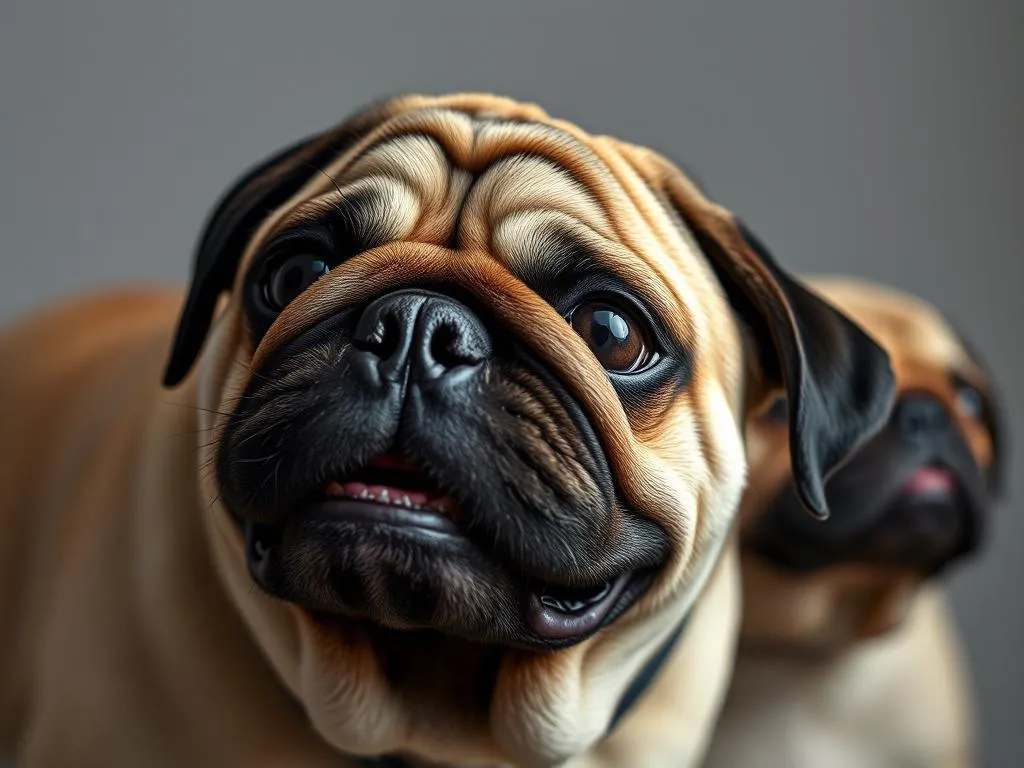
Introduction
Choosing the right dog breed is a significant decision for pet owners, as the behavior and temperament of different breeds can greatly affect the household dynamics. Among the myriad of dog breeds, pugs stand out for their charming looks and playful nature. However, a common question prospective pug owners often ask is, are pugs aggressive? This article delves into the temperament of pugs, examining their historical context, physical characteristics, and key behavioral traits to provide a comprehensive answer to this important question. Understanding the behavior of pugs is crucial for anyone considering bringing one into their home, ensuring a harmonious relationship between pet and owner.
Understanding Dog Breeds
Definition of Dog Breeds
A dog breed is a specific group of domestic dogs that share common characteristics, including physical appearance, behavior, and genetic lineage. These traits are often a result of selective breeding practices aimed at enhancing certain qualities. Understanding the characteristics of different dog breeds is essential for predicting behavior, as these traits can influence everything from temperament to training needs.
Factors Influencing Dog Behavior
Several factors contribute to a dog’s behavior, including:
- Genetics and Hereditary Traits: Certain breeds have inherited traits that can predispose them to specific behaviors, such as guarding instincts or friendliness.
- Environment and Socialization: The environment in which a dog is raised, along with its social interactions, significantly shapes its behavior. Dogs that are well-socialized tend to be more adaptable and less aggressive.
- Training and Owner Interaction: The relationship between a dog and its owner is pivotal. Positive reinforcement and consistent training can foster good behavior and mitigate aggressive tendencies.
Overview of Pugs
History of Pugs
Pugs have a rich history, originating from ancient China, where they were bred as companions for royalty. Their small size and affectionate nature made them ideal lap dogs. Over the centuries, pugs spread to Europe, becoming popular among nobility in countries like the Netherlands and England. Their unique characteristics and charming demeanor have made them beloved family pets worldwide.
Physical Characteristics of Pugs
Pugs are small dogs, averaging between 14 to 18 pounds, with a compact and muscular build. They have a distinctive wrinkled face, large expressive eyes, and a curled tail. Their short coat is smooth and comes in various colors, including fawn, black, and silver. Compared to other small dog breeds, pugs are known for their stocky build and unique facial features, which contribute to their endearing appearance.
Common Temperament Traits of Pugs
Pugs are generally known for their affectionate and playful personalities. They thrive on human interaction and are often described as sociable and friendly. Pugs typically get along well with children and other pets, making them excellent family companions. Their playful nature and need for companionship mean they often seek out the company of their owners, displaying loyalty and affection.
Aggression in Dogs
Understanding Aggression in Dog Breeds
Aggression in dogs is defined as behavior that is intended to harm or intimidate others. While some breeds may have a higher propensity for aggressive behavior due to their genetic background, aggression can manifest in any breed under certain circumstances. Understanding the roots of aggression is essential for responsible dog ownership.
Signs of Aggression
Identifying aggressive behavior in dogs is crucial for both safety and training purposes. Common signs of aggression include:
- Growling or snarling
- Baring teeth
- Stiff body posture
- Lunging or snapping
It’s essential to differentiate between playful behavior and aggression; for instance, playful barking and wagging tails indicate excitement rather than aggression.
Are Pugs Aggressive?
Debunking Myths About Pugs
A prevalent misconception is that pugs are aggressive, primarily due to their small size and assertive demeanor. However, this stereotype does not accurately reflect the breed’s overall temperament. Pugs are generally friendly and affectionate, and they tend to display aggression only under specific circumstances, such as fear or territoriality.
Factors Leading to Aggression in Pugs
While pugs are not inherently aggressive, certain factors can contribute to aggressive behavior:
- Situational Triggers: Fearful situations or perceived threats can lead to defensive aggression. For example, if a pug feels cornered or threatened, it may react aggressively to protect itself.
- Importance of Socialization and Training: Pugs that lack proper socialization may display fear-based aggression, particularly towards unfamiliar people or animals. Ongoing training and exposure to various environments can help mitigate these tendencies.
Expert Opinions and Research Findings
Studies on dog behavior indicate that pugs generally exhibit low levels of aggression compared to many other breeds. Experts, including veterinarians and dog trainers, often emphasize the importance of proper training and socialization to prevent aggression. Many trainers note that with appropriate guidance, pugs can be well-adjusted and sociable pets.
Proper Training and Socialization for Pugs
Importance of Early Socialization
Early socialization is critical for pugs. Exposing them to a variety of people, environments, and other animals during their formative months can significantly diminish the likelihood of aggressive behavior. Techniques for effective socialization include:
- Positive Exposure: Introduce your pug to new experiences gradually, using treats and praise to create positive associations.
- Group Classes: Enroll in puppy training classes to facilitate interaction with other dogs and people.
Effective Training Techniques
Training pugs effectively requires patience and consistency. Recommended training methods include:
- Positive Reinforcement: Reward-based training encourages desired behavior through treats, praise, or play.
- Short Sessions: Keep training sessions brief and engaging to hold your pug’s attention, as they can lose interest quickly.
Dealing with Aggressive Behaviors
If a pug exhibits aggressive behavior, it’s crucial to address the issue promptly. Steps to take include:
- Stay Calm: Reacting with anger or frustration can exacerbate the situation.
- Redirect Focus: Use toys or commands to redirect your pug’s attention away from the triggering situation.
- Seek Professional Help: If aggressive behavior persists, consider consulting a professional dog trainer or behaviorist.
Conclusion
In summary, understanding the temperament of pugs is vital for prospective pet owners. While the question, are pugs aggressive? may arise, it’s essential to recognize that aggression is not a trait inherent to the breed. By focusing on proper training, socialization, and creating a positive environment, pug owners can cultivate well-adjusted and loving companions. With their playful nature and affectionate demeanor, pugs can enrich family life, provided their behavior is nurtured positively.
FAQs
Are pugs good family dogs?
Yes, pugs are generally excellent family dogs due to their friendly and affectionate nature. They often form strong bonds with family members, including children.
Can pugs be trained not to be aggressive?
Yes, with proper training and socialization, pugs can learn to manage their behavior and reduce aggressive tendencies.
What are the best ways to socialize a pug?
The best ways to socialize a pug include exposing them to various people, pets, and environments, using positive reinforcement to create positive experiences.
How do pugs interact with children and other pets?
Pugs typically interact well with children and other pets, displaying playful and friendly behavior. However, supervision is essential to ensure harmonious interactions.
What should I do if my pug shows aggressive behavior?
If your pug shows aggressive behavior, remain calm, redirect their attention, and consider seeking guidance from a professional dog trainer if necessary.
By understanding and addressing the factors influencing pug behavior, owners can foster a loving and well-adjusted family pet.









